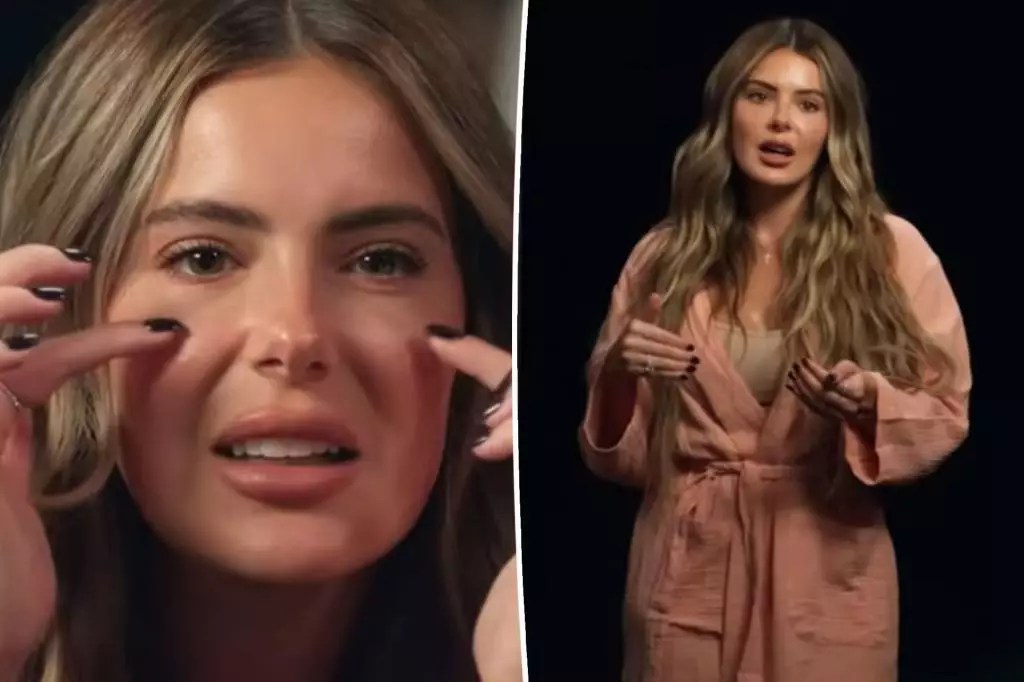In a society obsessed with youth and physical perfection, many young individuals are pushed toward cosmetic enhancements prematurely, often with little understanding of the long-term consequences. The story of Brielle Biermann exemplifies how early exposure to cosmetic procedures can be driven by external influences rather than personal desire. Beginning her journey into fillers at just 18, Biermann’s experience highlights a common trap: equating superficial beauty with happiness and acceptance. When cosmetic procedures are normalized within a family environment—like Biermann’s upbringing with her mother, Kim Zolciak—they can become embedded in a person’s self-identity before true self-awareness develops.
This early adoption often stems from societal pressures to maintain a flawless outer appearance, fueled by social media’s relentless scrutiny. As Biermann admits, her filler routine became almost routine—an attempt to conform to external expectations rather than listening to her own evolving sense of self. This pattern reveals a broader issue: young people are increasingly vulnerable to marketing and peer influence, which encourage quick fixes over genuine self-acceptance. The dangers here are multifaceted. Not only does this lead to potential physical complications, but it also traps individuals in an ongoing cycle of maintenance and dissatisfaction. Youthful vanity becomes a double-edged sword, blinding individuals to their natural beauty, which often is more resilient and authentic than any artificially enhanced feature.
Unexpected Consequences and Self-Realization
Biermann’s candid reflection about her regret underscores an important point: cosmetic decisions made in haste or under societal pressure may not age well. Her dissatisfaction with asymmetrical under-eye filler is a concrete example of how aesthetics can backfire. The puffiness she describes wasn’t just a physical issue but also a sign of deeper insecurity that had been normalized over time. Such complications serve as unintentional lessons for others considering similar procedures—reminding us that beauty interventions require cautious deliberation and should never be driven by external validation alone.
Furthermore, Biermann’s story illuminates how self-perception can be distorted by constant exposure to artificial standards. The normalization of cosmetic enhancements within her family creates a cycle where young women grow up seeing procedures as routine, almost as essential as brushing teeth. This environment instills a notion that aging and imperfections are problems to be fixed rather than natural parts of life’s journey. Her experience also demonstrates the potential pitfalls of social media influence, where models and influencers often showcase curated images that perpetuate unattainable beauty ideals, pushing impressionable viewers to chase after equivalent standards at any cost.
The Role of Industry and Society in Shaping Beauty Norms
The cosmetic industry plays an influential role in shaping perceptions of beauty—often perpetuating a narrative that natural aging is undesirable. Biermann’s story is just one example in a broader Hollywood landscape where youthfulness is celebrated at the expense of authenticity. Media outlets and influencers frequently showcase a narrow definition of attractiveness, which can lead to a relentless pursuit of perfection that disregards individual uniqueness.
Public figures like Hilary Duff and Jennifer Garner publicly caution against youthful over-treatment, highlighting a societal shift toward embracing natural beauty. However, despite these voices of reason, the industry’s dominance persists. Cosmetic clinics constantly target young audiences, offering free procedures, discounts, and social media exposure, thereby blurring the lines between endorsement and exploitation. This dynamic creates an environment where cosmetic procedures are less about personal enhancement and more about societal acceptance—highlighting a pressing need for more education and critical awareness.
From a personal perspective, it’s evident that embracing natural aging and imperfections should be prioritized over succumbing to superficial trends. True confidence stems from self-acceptance and the belief that beauty is diverse, imperfect, and uniquely yours. Society must work toward redefining standards, promoting stories like Biermann’s not as cautionary tales of regret but as lessons of growth and self-awareness. Only then can we foster a culture where cosmetic procedures are genuinely empowering rather than tools of insecurity or societal compliance.


Leave a Reply